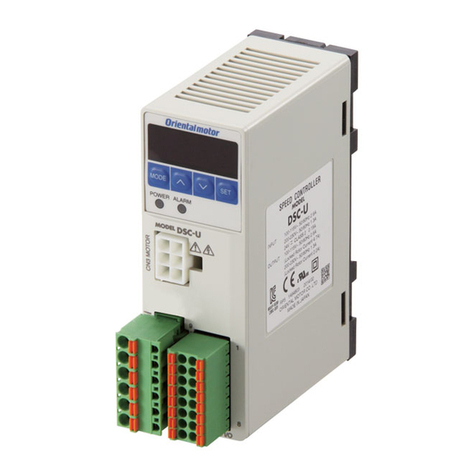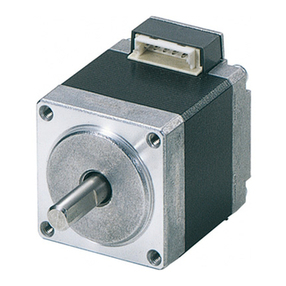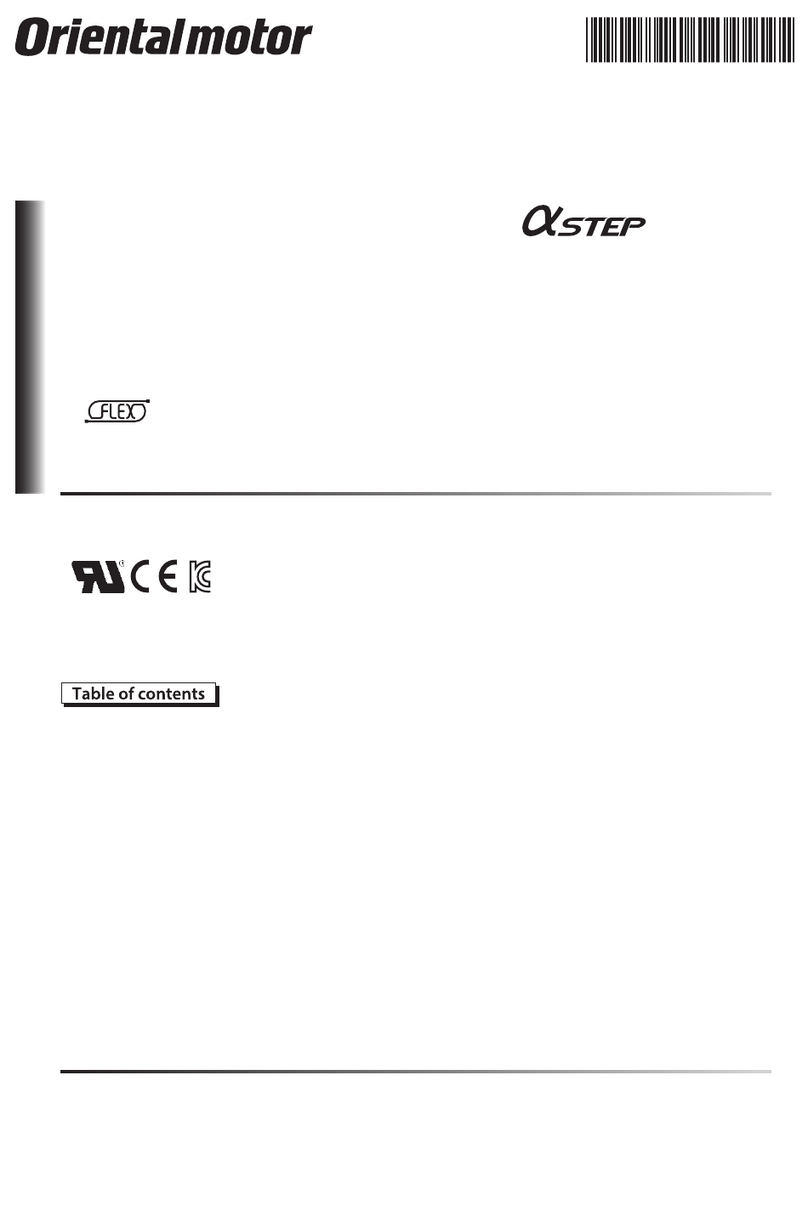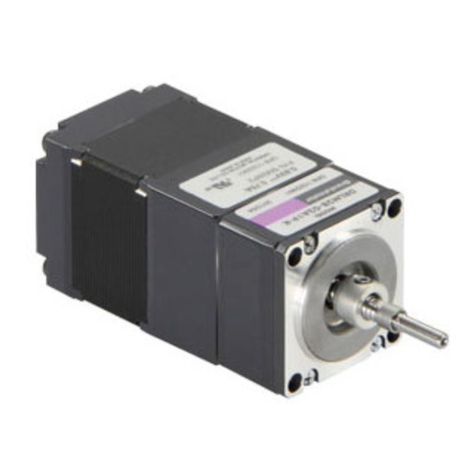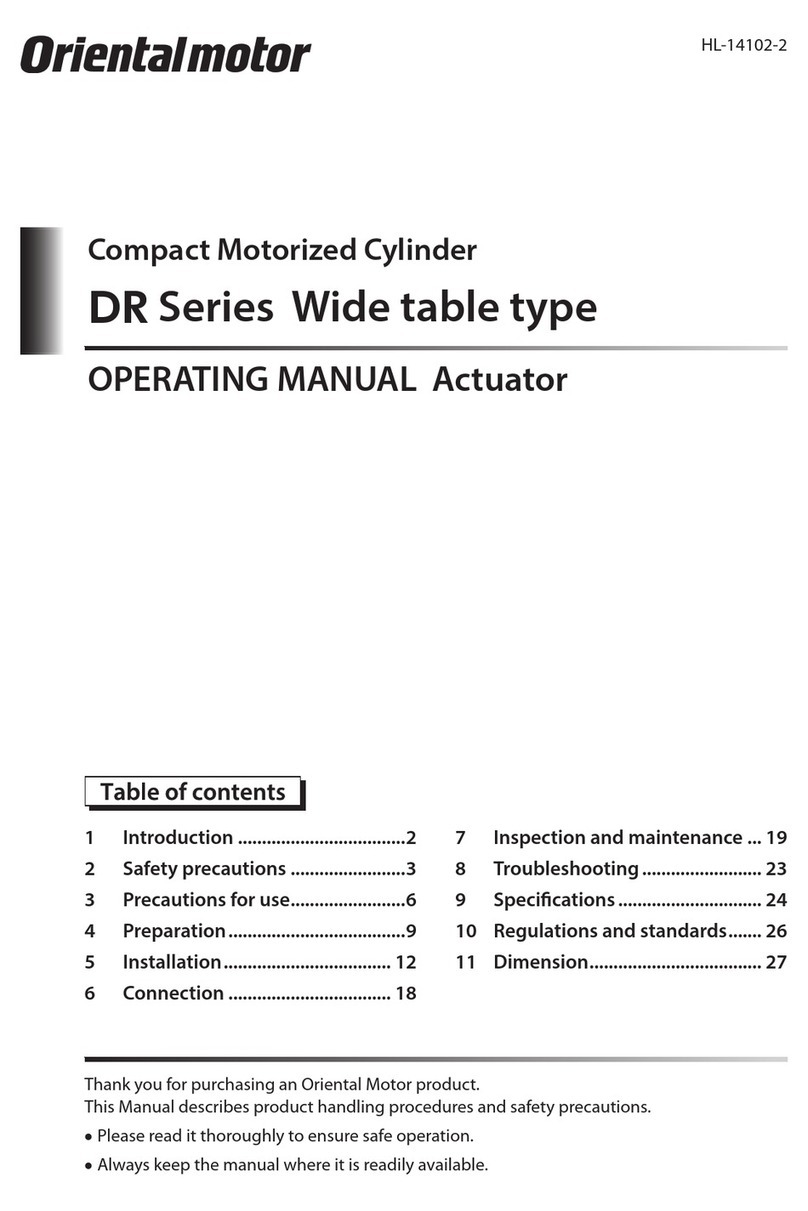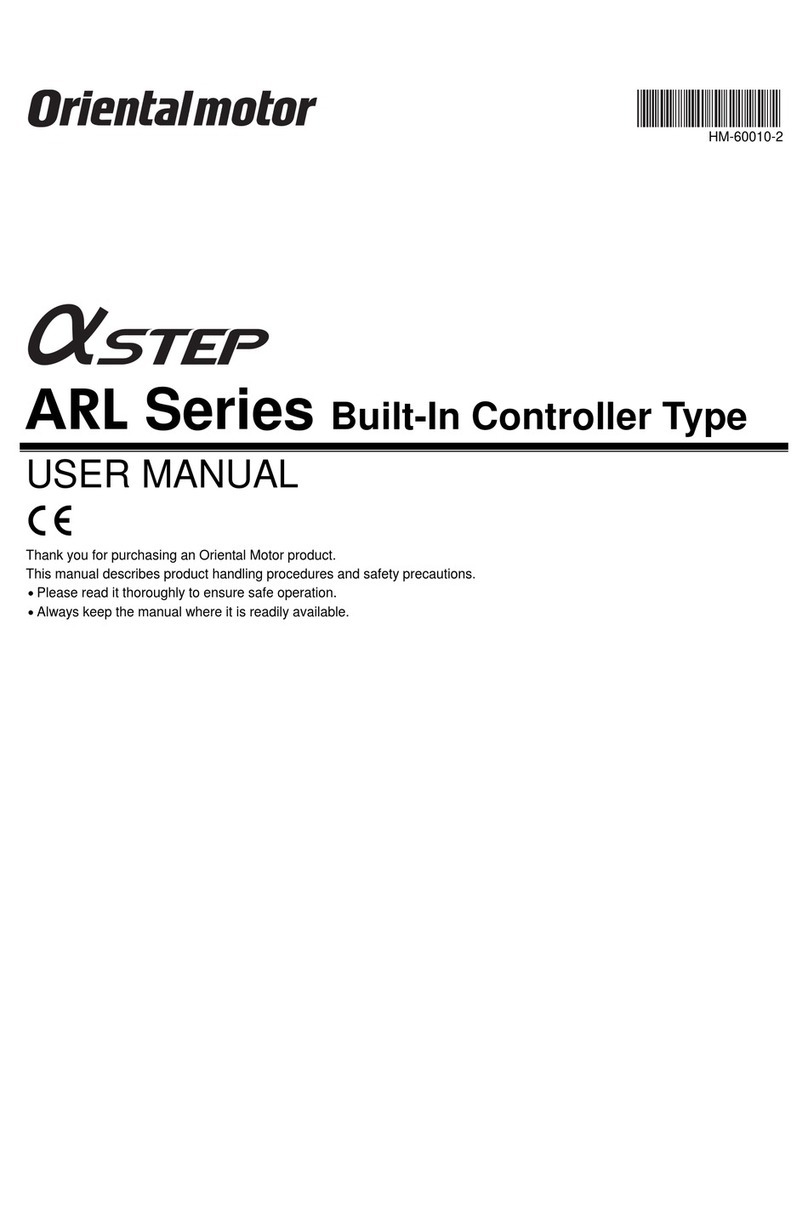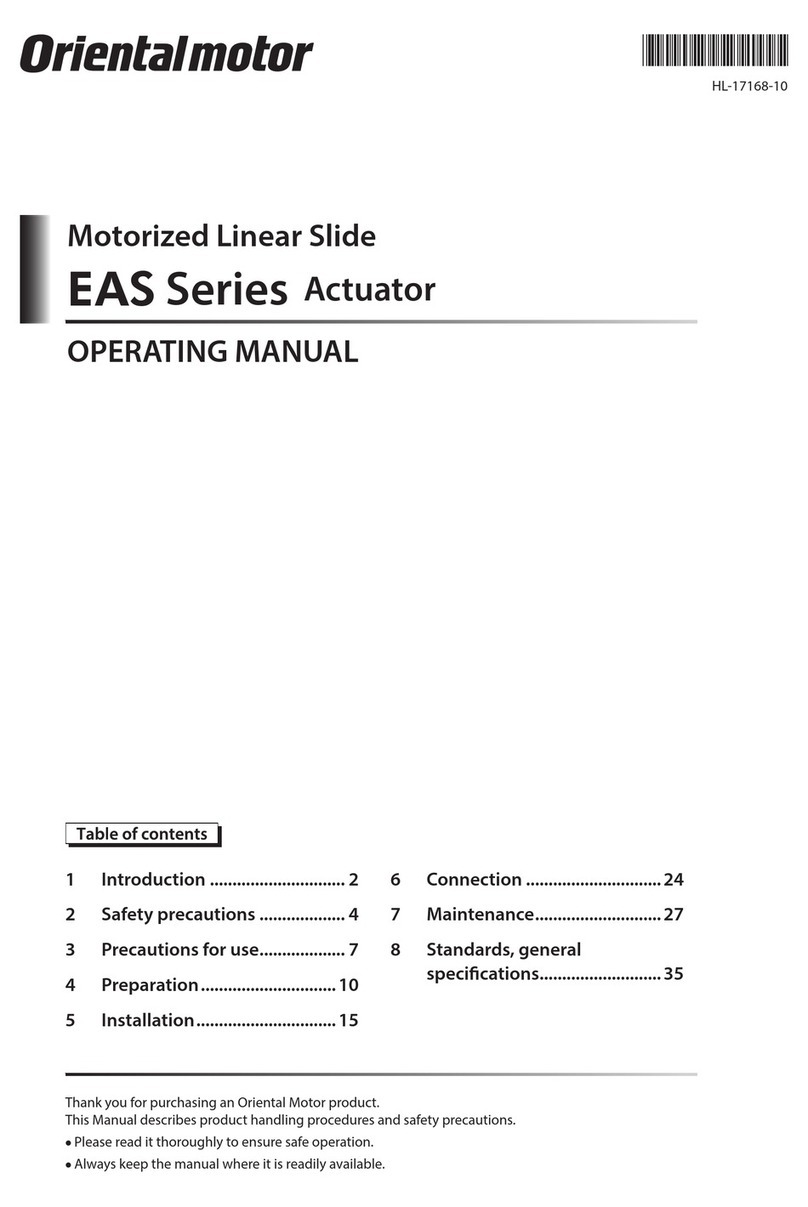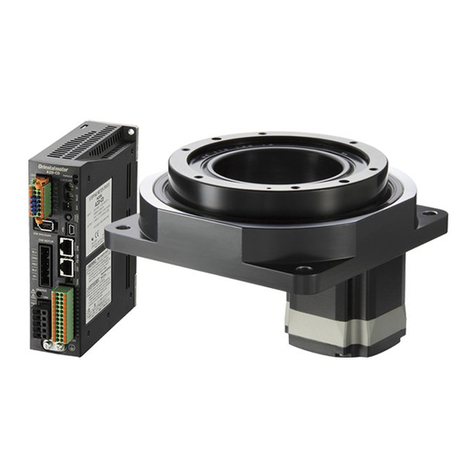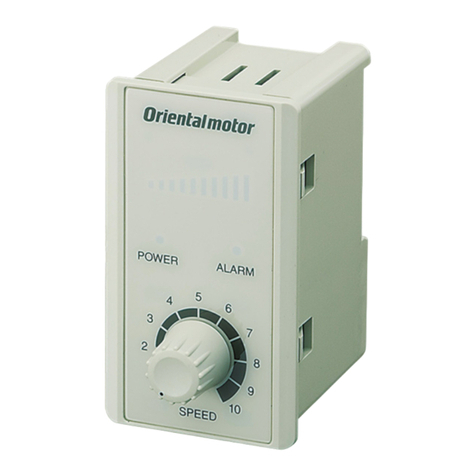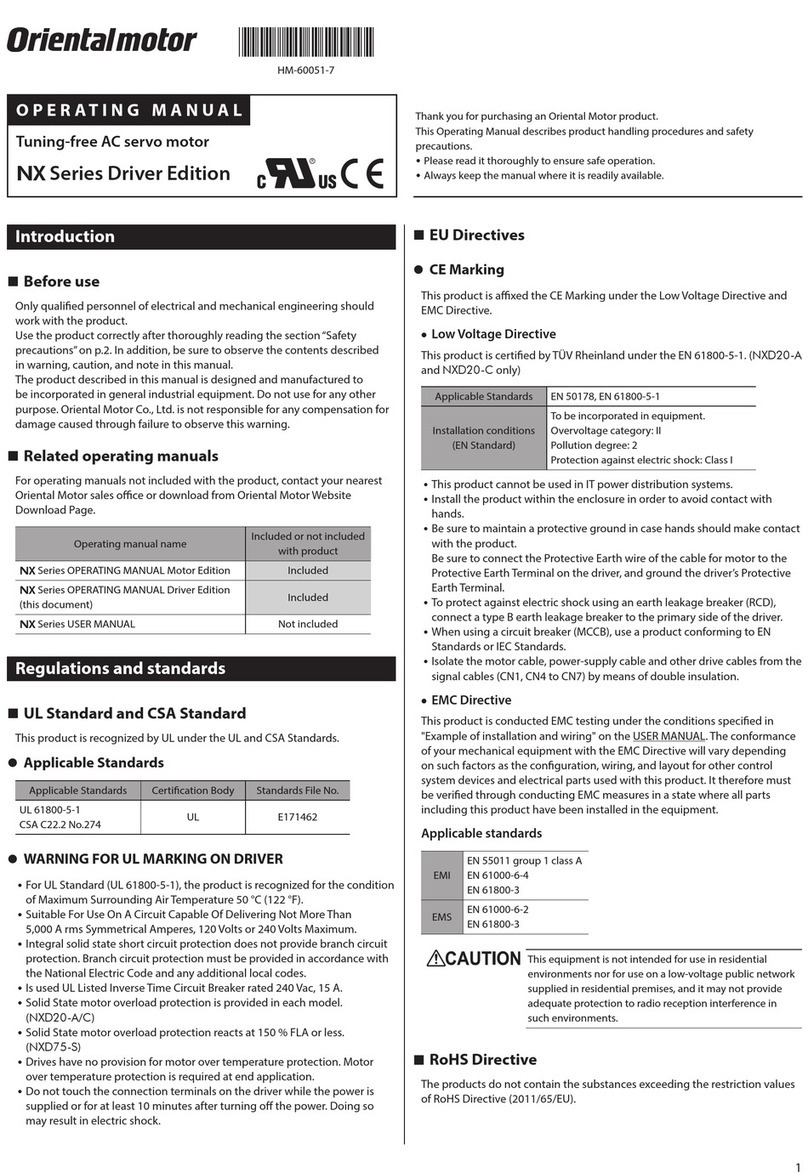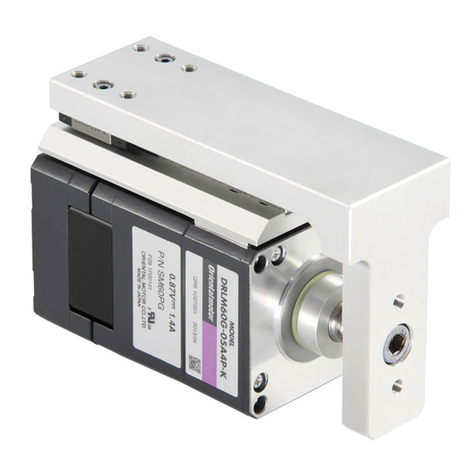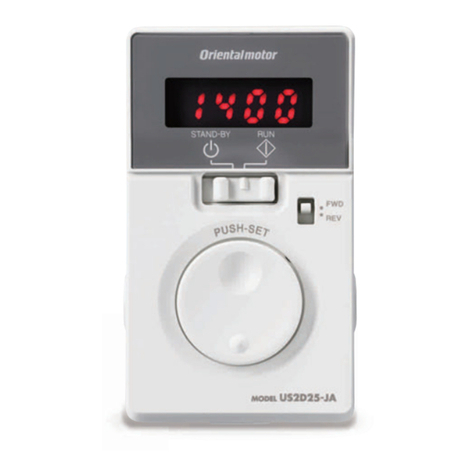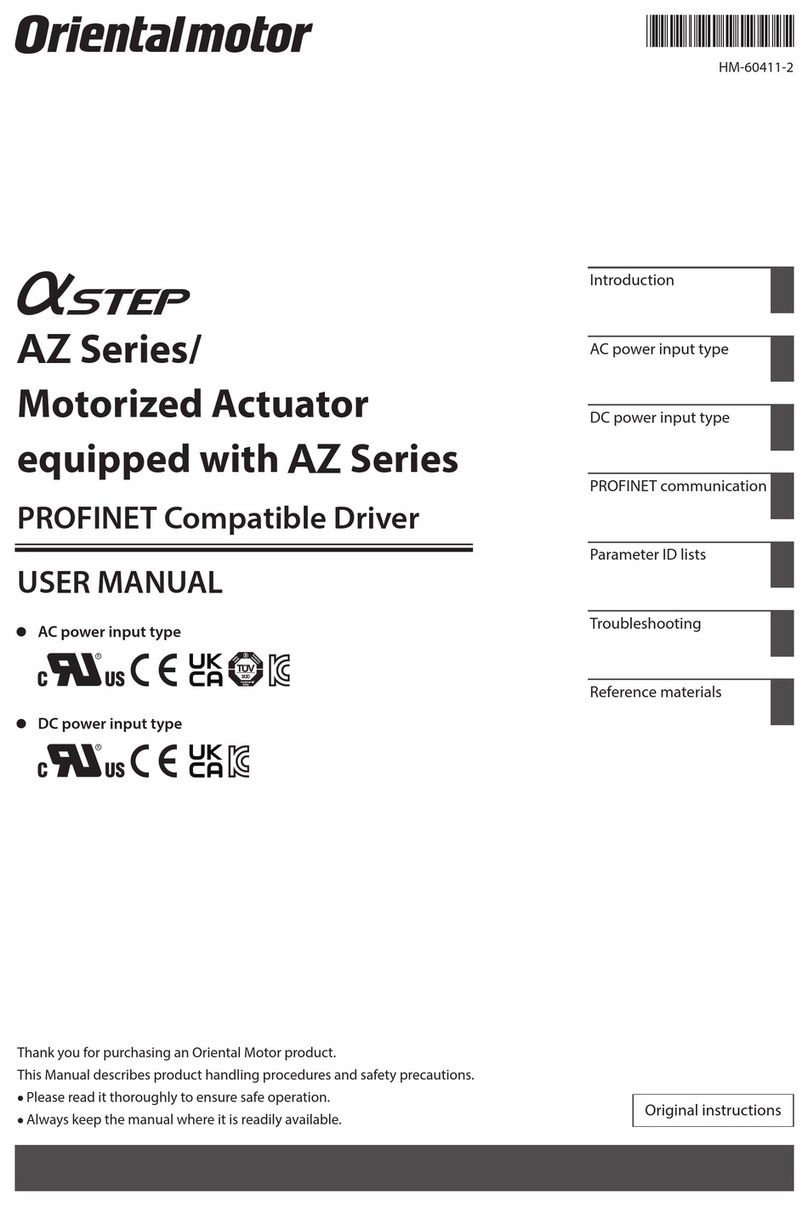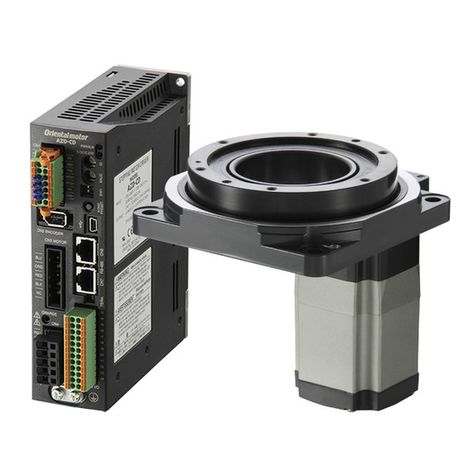
Installation
▌10
Install the driver in an enclosure.
Do not use any holes on the MOSFET arrays to install the drivers.
Do not install any equipment that generates a large amount of heat or noise near the driver.
Adjust the ventilation condition if the ambient temperature of the driver exceeds 40 °C (104 °F).
Review the operating conditions if the surface temperature of the MOSFET arrays exceeds 90 °C
(194 °F).
The case containing the MOSFET arrays is insulated.
5-3 Installing and wiring in compliance with EMC Directive
Eective measures must be taken with regard to EMI caused by the DRL series actuator and/or driver in the control
system equipment operating nearby and EMS of the DRL series actuator and/or driver. Failure to do so may result
in serious impairment of the machine’s functionality. The use of the following installation and wiring methods will
enable the DRL series actuator and/or driver to be compliant with the EMC Directive.
Oriental Motor conducts EMC measurements on its DRL series actuator and drivers in accordance with "Example of
actuator and driver installation and wiring" on p.11.
The user is responsible for ensuring the machine’s compliance with the EMC Directive, based on the installation and
wiring explained below.
Applicable Standards
EMI EN 55011 group 1 class A, EN 61000-6-4, EN61800-3
EMS EN 61000-6-2, EN 61800-3
Power supply
The DRL series CRD driver unit are specically designed for DC power supply input.
Use a DC power supply (such as a switching power supply) compliant with the EMC Directive.
Mains lter
Connect a mains lter on the input side of the DC power supply so as to prevent the noise generated in the driver
from being transmitted externally via the power supply line.
When a power supply transformer is used, be sure to connect a mains lter on the AC input side of the power
supply transformer. For mains lters, use HF2010A (SOSHIN ELECTRIC CO., LTD), FN2070-10-06 (Schaner EMC) or an
equivalent.
Install the mains lter as close to the AC input terminal of DC power supply as possible. Also, secure the I/O cables
(AWG18: 0.75 mm2or more) using cable clamps or the like so that the cables won’t lift from the surface of the
enclosure panel.
The cable used to ground the mains lter must be as thick and short to the grounding point as possible.
Do not wire the AC input cable (AWG18: 0.75 mm2or more) and the output cable of the mains lter (AWG18:
0.75 mm2or more) in parallel. If these two cables are wired in parallel, noise inside the enclosure will be connected
to the power supply cable via stray capacitance, reducing the eect of the mains lter.
Grounding method
The cable used to ground the driver and mains lter must be as thick and short as possible so that no potential
dierence is generated. Choose a large, thick and uniformly conductive surface for the grounding point.
Install the actuator onto a grounded metal surface.
Wiring the power supply cable and signal cable
Use a shielded cable of AWG22 (0.3 mm2) or more for the power supply cable of driver, and keep it as short as possible.
Use a shielded cable of AWG24 (0.2 mm2) or more for the I/O signals cable, and keep it as short as possible.
To ground a power supply cable and I/O signals cable, use a metal clamp or similar device
that will maintain contact with the entire circumference of the shielded cable.
Attach a cable clamp as close to the end of the cable as possible, and connect it as shown
in the gure.
Cable clamp
Shielded cable


